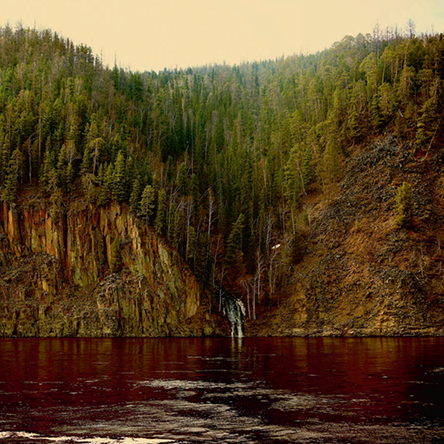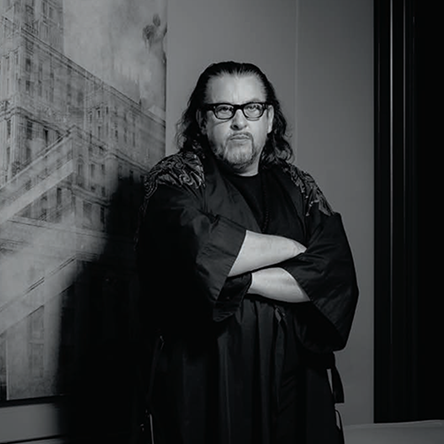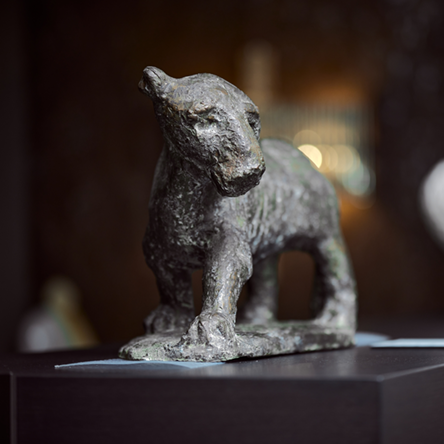NICHOLAS ROERICH
Nicholas Konstantinovich Roerich is one of the most outstanding figures of Russian and world culture. He was born in St. Petersburg, Russia, on October 9, 1874, the first-born son of lawyer and notary, Konstantin Roerich and his wife Maria.
His family background was such that had him raised amongst prominent writers, artists, and scientists of his day who would frequent the Roerich’s residence. From childhood, he showed a curiosity for painting, archeology and history. Roerich’s talent for drawing had manifested when he was a very young, and by the time he reached the age of sixteen he began to think about entering the Academy of Art to pursue his artistic inclination. His father resisted this choice and insisted that Nikolai follows his own steps in the study of law. A compromise was reached, and in the fall of 1893 Roerich enrolled simultaneously in the Academy of Art and at the St. Petersburg University, an arena heavily focused on academia.
In 1895 Roerich met the prominent writer, critic, and historian, Vladimir Stasov. Through Stasov, he was introduced to many of the outstanding composers and artists of the time—Mussorgsky, Rimsky-Korsakov, Stravinsky, and the basso Fyodor Chaliapin. At concerts at the Court Conservatory he heard the works of Glazunov, Liadov, Arensky, Wagner, Scriabin, and Prokofiev for the first time, which furthered his love for music. Roerich was particularly fond of Wagner, and later, during his career as a theater designer, he created designs for most of Wagner’s operas. Moreover, musical terms and analogies can appropriately be applied to Roerich’s painting. He frequently related music to the use of colour and colour harmonies, and applied this sense to his designs for opera.
By 24, Nicholas Roerich had already become an assistant to the Director of the Emperor’s Art Encouragement Society Museum and, at the same time, editor assistant of the magazine “World of the Art”. The magazine declared itself the enemy of the academicians, the sentimentalists, and the realists. It’s audience, mostly the intelligentsia, were exposed to the vital elements of Russian artistic circles, European post-impressionism, and the modernist movement.
In 1897, Roerich graduated from the Saint-Petersburg Academy of Arts, and his final diploma work, “Messenger”, was acquired by Pavel Tretiakov, of the Tretiakov dynasty.
Roerich spent a year travelling around Europe on a cultural mission of visiting the museums, exhibitions, studios, and salons of Paris and Berlin. Just before his departure, he met Helena, daughter of the architect Shaposhnikov and niece of the composer Mussorgsky. Unity of views and deep mutual sympathies grew into a powerful and lasting connection. October 1901, upon Roerich’s return from Europe, Nikolas and Helena were married.
Helena Roerich was a gifted pianist and author of many books, including The Foundations of Buddhism and a Russian translation of Helena Blavatsky’s Secret Doctrine.
For Roerich, who believed that the Slavic and Indian cultures shared a common origin, Buddhist philosophy held a special spiritual significance. Roerich was particularly interested in the Shambala, which signified a mythical link between heaven and earth and which was thought to be located within a hidden valley deep in the Himalayas (Simon Pierse, ibid.).
Helena Roerich’s contribution in the life and work of Nicholas has been substantial; their union could be best described as a lifetime collaboration.
Between 1903 – 1904, Roerich together with his wife made a trip to the old cities of Russia. They visited more than 40 cities famous for their ancient monuments. The aim of this “trip though ancient times” was the study of the roots of the Russian culture. The trip’s result was not only a wide series of the artist’s paintings, but also Roerich’s first articles. In them, he was one of the first to raise the issues surrounding the great artistic value of old Russian icon painting and architecture. In that time Roerich painted the first of his paintings on religious themes. These mostly dealt with Russian saints and legends, and included Message to Tiron, Fiery Furnace, and The Last Angel, subjects that he returned to with numerous variants in later years.
In 1906, Sergei Diaghilev arranged an exhibition of Russian paintings which included sixteen works by Nicholas Roerich.
In the years immediately preceding World War I, Roerich sensed an impending cataclysm, and his paintings symbolically depicted the calamities in wait. These works marked the birth of Roerich the “prophet.” In “Battle in the Heavens”, Roerich used the violent contrast of light and dark as visual omens foretelling the cataclysm that would befall Russia and Europe.
In 1916, due to a severe pneumonia, as per the advise of his Doctor, Roerich together with his family moved to Finland, to the Ladoga Lake coast. Proximity to Saint Petersburg allowed him to go from time to time to the city on the Neva river and deal with the Art Encouragement Society School affairs. After the revolutionary events of 1917, Finland closed its borders with Russia, and Roerich with his family had been cut off from his Motherland. Not being able to temporarily enter Russia, Roerich turned his attention to painting, took assignments in stage design and wrote blank verse. In 1920, Roerich immigrated to the United States, in the same year he and his wife founded the Agni Yoga Society, which espoused a living ethic encompassing and synthesizing the philosophies and religious teachings of all ages.
In 1921, in New York, Nicholas Roerich founded the Master Institute of United Arts, in which he planned to realise the educational concepts he had incorporated into the curriculum in St. Petersburg.
An exhibition of more than 400 of his works debuted in New York, where Roerich founded the Master Institute of United Arts (1921–37), for which he assembled a first-rate faculty to instruct in a wide range of disciplines. (In 1949 the institute was reborn on West 107th Street as the Nicholas Roerich Museum.)
Roerich gained a significant following in the United States, especially among the well-to-do, many of whom supported his philosophy and provided the funding to further his teachings. In December 1923, the Roerich family began an extended exploration of India and it’s neighbouring regions in a quest for the Eastern spirituality that had come to play an increasingly important role in Roerich’s thinking and artistic output. The family established the Urusvati Himalayan Research Institute in 1928 in the Himalayan foothills of the Kullu valley in Himachal Pradesh. There too, despite their frequent travels, the Roerich family established a home. In May, 1923, the Roerichs were on their way to India, where amid the snow of the Himalayan range, they sought to turn to the Eternal.
Let us be united—you will ask in what way? You will agree with me: in the easiest way, to create a common and sincere language. Perhaps in Beauty and Knowledge.”
N. K. Roerich
The Roerichs began a tour of cultural centres and historic sites, meeting Indian scientists, scholars, artists, and writers along the way. By December, they had reached Sikkim on the southern slopes of the Himalayas. The expedition took them into Chinese Turkestan, Altai, Mongolia and Tibet. It was an odyssey into untracked regions where they planned to study the religions, languages, customs, and culture of the inhabitants. Roerich wrote about this first Central Asiatic Expedition in his book “Heart of Asia”, in which he creates a vivid account of the land’s wonder and its people. The images, however, are nowhere as vivid as in the five hundred or so paintings that resulted from the trek.
He believed that although earthly temples and artefacts may perish, the thought that brings them into existence does not, and it is a fragment of an eternal stream of consciousness. Roerich believed that peace on Earth was a prerequisite to planetary survival and the continuing process of spiritual evolution and he exhorted his fellow man to help achieve that peace by uniting in the common language of Beauty and Knowledge.
Nicholas Roerich died in Kullu on December 13, 1947. His body was cremated and its ashes buried on a slope facing the mountains he loved which are portrayed in many of his nearly seven thousand works.



